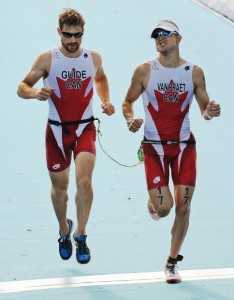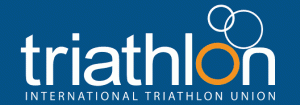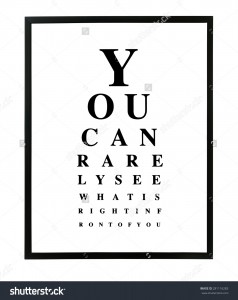I recently spent a very interesting weekend in Lisbon, Portugal. It wasn’t for a race (although this year’s European Tri Champs will be held there in May) or even for a mini-break, which would have been nice. My trip was to join a small working group looking at classification of visually impaired and blind athletes in triathlon as part of an ITU working group.
This followed on from previous meetings and discussions ITU has had with researchers and other interested parties with the aim of developing a ‘sport specific’ system that accurately and fairly categorises athletes.
The group was comprised of an experienced IBSA classier, representatives from the university in Lisbon who have a keen interest in research around visual impairment, athletes and coach’s. Our group was headed up Eric Angstadt from ITU, who I learned during the weekend has vast experience across several Paralympic sports. For me, it was especially good to see a range of athletes involved with Susi Garcia (B2 athlete from Spain) and Alen Kobilica (B1 athlete from Slovenia) were present alongside myself (B3 athlete, UK).

Creating a new classification system for VI athletes is no simple matter (Picture: Ryan Van Praet and Guide, Canada).
I won’t go into detail about the outcomes of the weekend, as this is really for ITU to communicate to each of the National Federations. They in-turn can communicate this to their athletes for feedback,
However broadly speaking we focused on a number of key themes including: –
- Review of the work already completed by ITU
- The current classification system/tests and whether we think they are useful/appropriate
- The different aspects of visual functioning that relate to triathlon/sports performance
- How we rated the relevance of each of these aspects in terms of swim, bike, run and transition
- Discussion around use of existing/new tests that would be more appropriate and the logistics/practicalities of implementing them in the future
- Research/data required to create a valid and reliable system
There seems to be general consensus that the current medically-based classification system, which looks primarily at visual acuity and field of vision, are inadequate when looking at sports performance. Whilst those measure are certainly relevant, things like depth/contrast perception, visual reaction time, light sensitivity and other factors can also be important. This is likely to vary from athlete to athlete and condition to condition.
It was good to hear the perspective of other athletes and how they are affected by their visual limitations, with some issues highlighted that I hadn’t considered previously. Equally I probably mentioned a few things others wouldn’t have thought about.
For example I try my best to use the vision I have, and, whilst this can be helpful, I sometimes mis-interpret what I see and get things wrong as a result. I rely on my vision when maybe I should just follow a set routine or trust my guide to do the looking for me, especially as my vision is patchy…Ironically for someone who can run and cycle independently (albeit carefully) I walked headlong into an iron post at Stansted Airport when travelling home from Portugal. Case proven!
We also talked a lot about the role of the guide and how in many situations they can negate the effect of visual impairment, but not always. There was a general feeling that those athletes who can train independently may be at some advantage over those who cannot/are limited to indoor training and that some athletes will struggle to develop technical skills (i.e. swim technique etc.). This might be more problematic for some individuals than others, and could link to whether they have a congenital or acquired visual problem.
We also had time to briefly talk about the Paratri rules for the PT5 category. This resulted in some interesting and healthy debate, but also more common sense from the group. We talked about things like use of blackout glasses and whether this was appropriate, the wording/interpretation of the swim and run conduct rules and how/why penalties are issued etc. Again I believe some suggestions from this will be communicated back to ITU from the athletes and coaches involved, which, if taken on board, might help everyone to have clarity.
Any changes arising from this work may be too late to make any real difference for me personally. In all likelyhood it will take several years for research to be completed and a new classification system implemented.
However, that’s fine. It’s at least nice to think that the ITU are keen to improve things and it’s great that they are involving the athletes so much. The key point though is that none of those involved attended because they wanted to push their own agenda – they participated with the best interest of the sport as a whole in mind, which should provide a strong basis to work from!
It will be fascinating to see if this work bears fruit in the coming years.
Iain



Good update Iain v interesting love Mum x